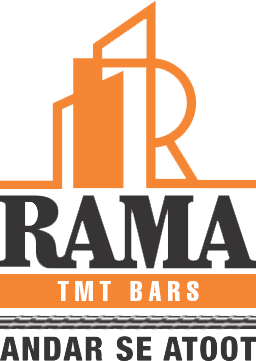When it comes to constructing a sturdy and reliable building, one crucial component that often gets overlooked is the choice of TMT steel bars. These bars play a pivotal role in ensuring the structural integrity and longevity of any construction project. In this comprehensive guide, we’ll delve into everything you need to know about TMT steel bars and the myriad benefits they offer.

What are TMT Steel Bars?
TMT, or Thermo-Mechanically Treated, steel bars are a type of reinforcement bar used extensively in construction projects worldwide. Unlike traditional mild steel bars, TMT bars undergo a unique manufacturing process that involves subjecting them to controlled heating and cooling cycles. This process imparts superior strength, ductility, and resilience to the bars, making them ideal for use in various structural applications.
Benefits of TMT Steel Bars

1. Exceptional Strength: TMT steel bars boast unparalleled strength, ensuring they can withstand heavy loads and seismic forces, making them perfect for earthquake-prone regions.
2. Enhanced Ductility: The thermo-mechanical treatment process enhances the ductility of TMT bars, allowing them to undergo substantial deformation without failure, thereby enhancing the structural safety of buildings.
3. Corrosion Resistance: TMT bars are highly resistant to corrosion, thanks to the formation of a protective oxide layer during the manufacturing process. This extends the lifespan of structures and reduces maintenance costs.
4. Improved Weldability: TMT bars exhibit excellent weldability, enabling easy and efficient joining with other structural elements, such as columns, beams, and slabs.
5. Cost-Effectiveness: Despite their superior properties, TMT steel bars are competitively priced, making them a cost-effective choice for construction projects of all scales.
Understanding TMT Steel Bar Properties

1. Yield Strength: The yield strength of TMT bars determines their ability to resist deformation under load. Higher yield strength indicates greater structural integrity.
2. Ultimate Tensile Strength: This parameter represents the maximum stress a TMT bar can withstand before failure. Higher tensile strength ensures enhanced safety and durability.
3. Elongation: Elongation refers to the percentage increase in length a TMT bar can undergo before fracture. Higher elongation values signify greater ductility and resilience.
4. Bendability: TMT bars should be capable of bending without cracks or fractures. Bendability is crucial for shaping bars during construction without compromising their structural integrity.
Conclusion:
In summary, TMT steel bars are indispensable components in modern construction, offering unmatched strength, durability, and resilience. By understanding the unique properties and benefits of TMT bars, builders and contractors can make informed decisions to ensure the safety and longevity of their projects.
So, whether you’re embarking on a new construction venture or renovating an existing structure, choose TMT steel bars for peace of mind and unparalleled structural integrity.

